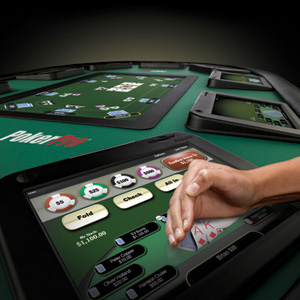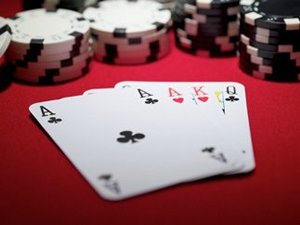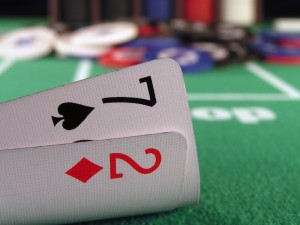Finding a game that fits the stakes you want to play
Editor’s note: What follows is an edited excerpt from Jeff Hwang’s book, Advanced Pot-Limit Omaha: Small Ball and Short-Handed Play.
The biggest problem in live play regarding game selection is finding a game that fits the stakes you want to play. That said, the problem in doing so in pot-limit Omaha (PLO) is that the game scales rapidly, as a $5-$5 game with $500 to $1,000 stacks is going to play very differently from a $5-$5 game with $5,000 stacks. As a result, whereas a $25,000 to $40,000 bankroll may be adequate for the smaller game, you might need more like $60,000 to $75,000 to play in the bigger one!
This is an issue that’s unique to live play for a couple of reasons:
1. Uncapped buy-ins
2. The straddle option
In stark contrast to online games, the vast majority of games in live play (as of this writing) feature uncapped buy-ins. As such, you might see one $5-blinds game with mostly $500 to $1,000 stacks, and another with $4,000 or $5,000 stacks. One of the effects of the disparity in stack sizes is that while the $5-blinds games with the smaller stacks will tend to be fairly passive preflop, with relatively little raising, the games with the $4,000 and $5,000 stacks will be a lot more aggressive, with a lot of raising and three-betting before the flop.
This by itself is something to think about, but it’s not necessarily a monumental issue — at least not until you combine it with the other major wrinkle of live play, which is the option to straddle.
Also in contrast to online games, virtually all PLO games in live play allow the option to straddle — whether on the button or under the gun — which is a mechanism that allows the bigger players to effectively change the size of the game. So now, a player looking to see a lot of $5 flops in a relatively sedate $5-$5 game is in for a major shock when he finds a game with $5,000 stacks, because the $10 straddle is usually going to be out — effectively making it a $5-$5-$10 game — and the bigger players will usually make it $50 to $60 to go before the flop, and sometimes $100 or $200, just because.
And this is a much bigger issue in PLO than it is in no-limit hold’em (NLHE), because in NLHE, at least there is a built-in protection mechanism against excessive preflop action. In NLHE, if there is consistently too much action preflop, at some point, it will be profitable for a tight player to just wait for A-A and shove. But in PLO, where (1) starting hands run relatively close together in value, (2) there is no starting hand that is a monster against every other hand, and (3) the pot-limit betting structure generally prevents all-in moves, the games can get out of control pretty fast.
At this point, the only real options are to find another game or (gasp!) try short-stacking.
That said, when looking for a game, it is imperative that you take a look at the stack sizes. If you are looking for a softer game that plays something like the small-stakes full-ring games online, look for a game with smaller stacks, and avoid games with bigger ones.
Submit your review | |










